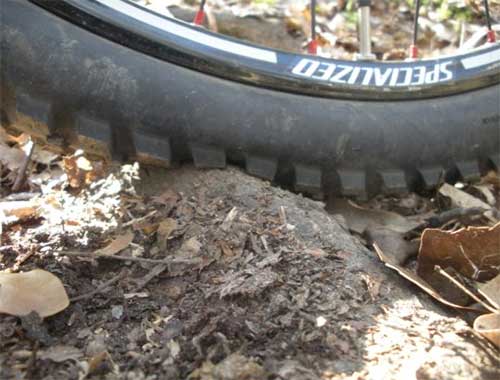Tubes vs. Tubeless Tires
What would you say if you didn't have to replace inner tubes anymore and didn't even have to have them inside your tire? Sounds pretty nice, doesn't it? Well if you have the right kind of tire and the right kind of rim then this is definitely a possibility for you. Running tubeless is staring to become more popular as more tubeless tires hit the market and as many higher end bikes are coming with tubeless ready rims and tires.
Using tubes is the standard way to go and is what people have been doing for years. Most bikes come with tubes installed even if they have tubeless ready tires on them from the factory. The inner tube itself goes between the rim and the tire providing the inflation the tire needs to work. You can put various amounts of air pressure in the tube to adjust to the trail and your riding style. The higher the pressure the less likely you are to get pinch flats but at the same time there is less tire making contact with the ground and you may find yourself bouncing around more off of rocks and not cornering as well.
Then there is the other side of the spectrum which is tubeless tires. There are two type of tubeless tires, UST (universal system for tubeless) and tubeless ready with the main difference being that UST tires don't require sealant (for the most part) and tubeless ready tires do. Sealant is used to make sure no air escapes the tire once you inflate it since there is no tube to hold the air in. Special valve stems are also required on tubeless tires. UST tires are usually thicker (and heavier) and can take more of a beating than tubeless ready tires without having to worry about them popping off the rim. Some people don't notice a real difference between tubeless ready tires and tubed tires. Tubeless tires are used more with downhill riders and more extreme styles of riding where you need the extra performance you get from lower tire pressures.

The decision to go tube vs. tubeless should be based on your riding style, the terrain you are riding on and what type of bike you are riding. Just because you don't like changing tubes doesn't make for a good enough reason to switch to tubeless! You must also be willing to put in the extra work and expense required to get your bike running tubeless and if you don't like it then you will have to do the work to switch it back so keep that in mind.
Inner tube pros
- No extra setup required
- Easy to fix a flat
- Cheap to run if you don’t get a lot of flats
- Don't need special tires or rims
Tubeless pros
- No tube to replace
- You can run lower tire pressure for better grip without pinch flats
- Running over thorns generally won't flatten the tire
- Possible lower rolling resistance
Inner tube cons
- Have to run higher pressure to avoid pinch flats
- Running over a thorn most likely means you will have to replace the tube
- Gets pricey if you get a lot of flats
- Not as much tire contacting the trail thanks to higher pressures
- Possible higher rolling resistance
Tubeless cons
- More expensive to setup
- Need special tires and rims
- If you put a hole\rip in your tire it will not hold air
- Still need to carry a tube for backup
Posted by Preston Mason


